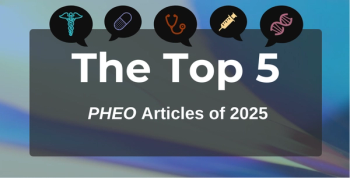
CARTITUDE-4 Data Solidify Cilta-cel’s Role in RRMM: Surbhi Sidana, MD, MBBS
Surbhi Sidana, MD, MBBS, director of the Myeloma Disease Focused Group at Stanford University, provides a reintroduction to CARTITUDE-4 and insight on how this phase 3 investigation builds on previous findings of CAR T vs standard-of-care findings in relapsed/refractory multiple myeloma (RRMM)
Two recent prominent meetings in the oncology space saw the presentation of promising data from the CARTITUDE-4 trial (NCT04181827), which is investigating the chimeric antigen receptor T-cell therapy (CAR T) ciltacabtagene autoleucel vs pomalidomide, bortezomib, and dexamethasone (PVd) or daratumumab, pomalidomide, and dexamethasone (DPd) in relapsed and lenalidomide-refractory
In this first segment, she provides a reintroduction to CARTITUDE-4 and insight on how this phase 3 investigation builds on previous findings of CAR T vs standard-of-care findings in RRMM.
This transcript was lightly edited for clarity; captions were auto-generated.
Transcript
How does the CARTITUDE-4 trial build on previous findings of CAR T vs standard-of-care treatment in RRMM?
The CARTITUDE-4 clinical trial is a randomized clinical trial that evaluates CAR T—in this case, cilta-cel, or ciltacabtagene autoleucel—against 2 standard-of-care options. The physicians could choose one or the other: daratumumab/pomalidomide/dexamethasone, or pom/bortezomib [Velcade], dexamethasone, so DPd or PVd. Patients had to have 1 to 3 prior lines of therapy. For 1 line of therapy, they had to be len [lenalidomide] refractory. And patients were randomized 1:1 to either get CAR T or the standard-of-care arm. In the CAR T arm, patients were required to have at least 1 cycle of bridging, and the bridging was the same options as the standard-of-care arm. The physicians had to choose beforehand which treatment options they would choose, and if [the patients] were randomized to CAR T, that would be their bridging options; if they were randomized to standard of care, that would be their treatment options. And after 1 cycle of bridging, as long as disease was not progressing, then they could get CAR T as a 1-time treatment, and then it was just observation and supportive care after that.
Two years ago, we saw the primary release data from the CARTITUDE-4 trial, which showed an outstanding PFS [progression-free survival] benefit with a significant hazard ratio in favor of the CAR T arm over standard of care. Last year, we also saw that overall survival is better in the CAR T arm compared to the standard-of-care arm. This was presented by Dr. Mateos [Maria-Victoria Mateos, MD, PhD] at the IMS [International Myeloma Society] meeting in Brazil last year. And so, not just PFS benefit, but overall survival benefit in this early-relapse patient population of 1 to 3 prior lines of therapy. This trial has led to the FDA approval of CAR T as a second line, of
At this year's ASCO meeting, I had the privilege of
We also looked at extramedullary disease [EMD], which was defined as true extramedullary disease, so soft-tissue disease, not contiguous from bone, and there were 21 patients. In the intention-to-treat analysis, the PFS was in favor of CAR T, in cilta-cel, in this subgroup as well, and overall survival was also in favor.
I would point [out] one thing. Only 13 out of these 21 patients actually made it to CAR T in the EMD subgroup. Many of them actually progressed before going to CAR T. In the intention-to-treat analysis, the PFS was 12 months; in the as-treated analysis, [it] was 18 months with CAR T, and that tells me, even though this is a small subgroup, more work needs to be done. Perhaps we need to add better, bridging, consolidation, combined targets. The takeaway, for me, is yes, they benefit more from CAR T vs standard of care. The standard-of-care PFS was just 4 months, but we still have more work to do in this subgroup of patients.
To summarize, all of the prespecified subgroups, be it high risk or standard risk, in different lines of therapy, EMD vs not, there was benefit favoring cilta-cel for PFS and also trends for overall survival in each of these individual subgroups. That was very encouraging to see, for me, that all of these patients benefit from CAR T vs standard of care.
Newsletter
Stay ahead of policy, cost, and value—subscribe to AJMC for expert insights at the intersection of clinical care and health economics.







































